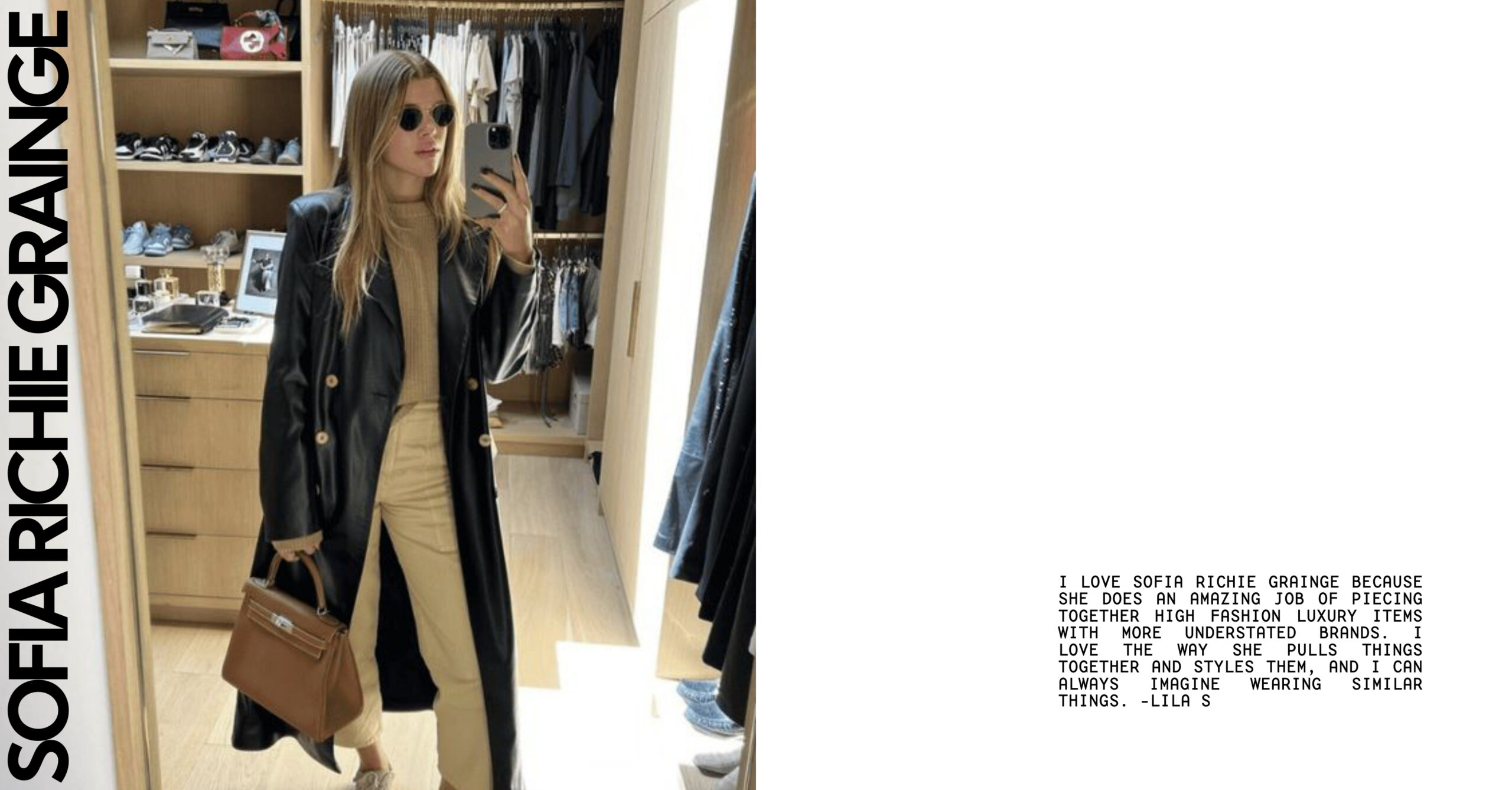The Mannequin of the Future?
Years ago when I was working on a retail innovation project, I was asked “What is the digital equivalent of a mannequin?” Everyone was redesigning physical stores to be future proof as the theory was that most shopping was going to be increasingly digitally enabled and, therefore, stores needed to reflect that shift. Mannequins, were a tried and true method for introducing fashion shoppers to key pieces, styled on a human form for context. Every store and every brand used them, but they felt outdated.
Looking back on that conversation from 2015, I can now confidently answer the question. The role of a mannequin was quickly being usurped by a new concept, the influencer. Fast forward almost 10 years and we’ve gone full circle, with many articles heralding the “death of influencer marketing” due to consumer skepticism around authenticity, something that we’ve heard echoed by our LuxuryVerse members.
I don’t look to so called “influencers” to dictate to me what’s hot and what’s not simply because they’re being paid to do so. That absolutely turns me off. – Stacey K, Millennial, NY
How Influential is the Influencer?
When it comes to luxury, it was clear that many of our clients, who work for big luxury brands in marketing, had the same question – “What influence does an influencer actually yield, particularly if your brand is one that requires no introduction?”
We set out to answer that question by tapping into our LuxuryVerse members and here are the numbers:
- 98% of our member base are on social media regularly – particularly on Instagram which 92% said they check daily
- 90% pay attention to influencers to some degree (31% paying more attention than they have in the past and 27% saying the same)
- 83% say influencers are their go-to source for discovery and styling
While close to 1/3 say they are paying less attention to influencers and 10% say they aren’t interested at all, this data is contradicted by the vast majority of members saying they are on social media daily. Influencer fatigue may be occurring, but they are still engaging with content. The reality is that luxury clients are constantly on social media and the majority are willing to admit they use it as their main source for discovery.
The Value Proposition of an Influencer = Context
The influencer is indeed very important when it comes to the purchase decision.
They provide context. Real world, relatable context in an inspiring aspirational format. They curate fashion pieces, model them on a real human, tell you about where they might wear the item and what they would wear it with. The influencer is likely someone you relate to because they are a similar age or body type. They might also have a lifestyle like yours (mom, outdoorsy, urban, etc.) and they seem to struggle with the same real life fashion scenarios – What do I wear to drop off on a rainy day? What denim cut replaces my skinny jeans? Is this “it” handbag actually worth it?
In the digital world, this context is a refreshing change from the mannequin, runway model or print ad/editorial that helped us discover items in the past. Those static images/statues only gave us a vague idea of fashion on a human form with a few styling cues. So yeah, influencers are way better. See below for a context example:
I’ve been eyeing this watch for a long time I just couldn’t justify the price necessarily. Over time I would see various influencers posting it on TikTok and dressing it up for a fancy event, but also styling it down on a day-to-day outfit. It made me realize how versatile the watch is, so I finally purchased it! – Rotem Millennial, LA
Why Brands Wish Influencer Marketing Was Less Important
If influencers are so important why do our clients seem to wish that our research told them that influencer marketing was ineffective? Here are few reasons:
- It is a highly fragmented and dynamic industry*– there is an influencer born every minute and the ones with the biggest audiences tend to have lower engagement and are often viewed as inauthentic. Staying on top of the right influencers to partner with is expensive and time-consuming
- It is hard to control creative – the most powerful influencer content is authentic and not overly produced. Here is the catch-22 for big, powerful brands. If they relinquish creative control, the influencer content may not be on brand. If they don’t, it doesn’t resonate with the audience and it falls flat
- They are real people, who make mistakes and have different opinions – influencers are humans that don’t always make rational decisions. Having an influencer take an action that is viewed as offensive can result in negative blowback for your brand
*When we asked who our members follow only 3 names received more than one mention (Sofia Richie, Arielle Charnas and Morgan Stewart). There were hundreds of other names, many who are active on multiple platforms
Where Influencer Marketing Won’t Help Luxury Brands
When it comes to luxury brands and their relationship to influencers, it is important to emphasize that they are not a replacement for top-of-funnel brand-building marketing. Brand-produced levers like fashion shows, flagship stores, image events, beautiful print/out-of-home, sponsorships, etc. add a level of cachet and credibility that can not and should not be replaced by influencers.
Also, when it comes to strong demand products like Hérmes bags, Chanel ballet flats and Cartier bracelets there is enough organic content floating around on social media that it makes no sense to spend time or money to control the narrative because it has become its own phenomenon.
Where Luxury Brands Can Leverage Influencers
- Recruiting new RTW clients via styling – We know that cultivating a loyal Ready-to-Wear client for high-end designers is key for longevity. But let’s face it, styling designer RTW isn’t always easy. Most women take a high/low approach wearing their investment piece with more affordable pieces, something that fashion editorial and brand styling struggle to accommodate. Finding the right context for wearing designer fashion when you’re not a size 2 fictional character like Carrie Bradshaw is also difficult. Partnering with a more diverse group of influencers to style some key RTW pieces in their daily life may help introduce this category to customers who have only dabbled in classic shoes or accessories.
- Reviving a classic – Our members love luxury math. Cost per Wear, Investment Pieces and a heavy dose of nostalgia factor into their sell, save or donate equations. When key pieces are seen IRL back in rotation, it can inspire a movement and make your brand feel more valuable. Some things we’ve seen recently that we see making a comeback with a new audience: Burberry plaid, the Balenciaga Motorcycle bag, Chanel No.5 and Clé de Peau concealer
- Launching a new product or category– The holy grail for an emerging luxury brand is an iconic high-margin product, usually a shoe, bag or fragrance. These higher margin categories can lift a brand into the consideration set and drive profit for the future. BUT…it can make your business too reliant on it. Using influencers to contextualize a new handbag, shoe or beauty product that seems like a departure from the tried-and-true brand is a good way to break customers out of their habits. This is perhaps the most common use case today for luxury influencer marketing. That said, these partnerships often fail if the product isn’t easy to contextualize (for example, beauty products that are more about packaging and price instead of results or innovation) and if the content feels overly produced, causing the campaign to feel inauthentic.
From Mannequins to TikTok
The world of fashion and beauty has come a long way from mannequins and models as the method for showing prospective buyers how your clothes might look on them. You really had to extend your imagination to envision how that dress would fit your body type, work with the shoes you had at home and for the occasion in which you might wear it. Influencers provide invaluable content for the modern shopper. That said, influencers are a lot less malleable than a mannequin and there is a certain degree of risk that goes along with it. But after our recent study, it is safe to say that when we are asked if influencer marketing should be a key part of any marketing mix, our answer is a resolute “yes”.
If you’ll excuse me, I’m going back to curating my Instagram feed to include some names recommended by our LuxuryVerse members…I need Spring wardrobe inspo.
Visit looklook.app/insights/ to download the full influencer study



